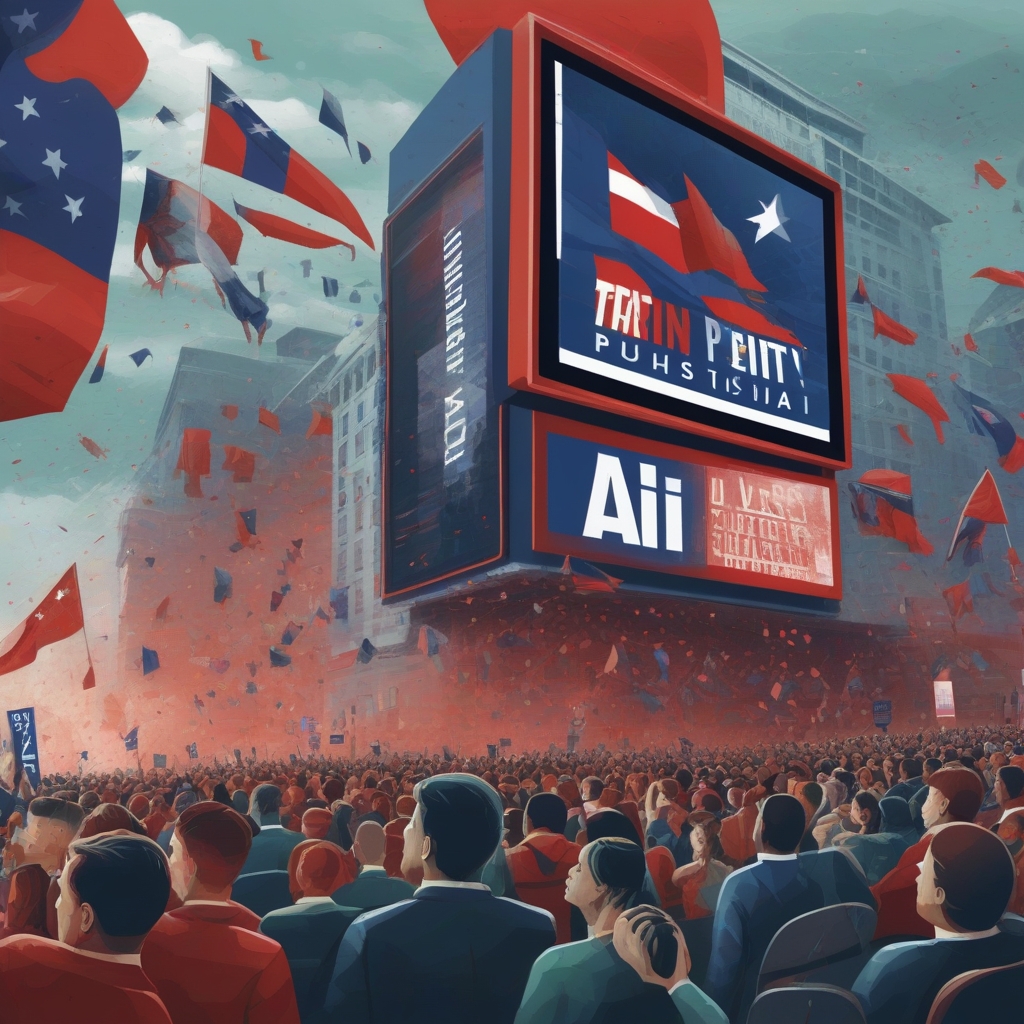In the contemporary digital age, the fusion of **artificial intelligence (AI)** and media has introduced revolutionary ways to influence public opinion, especially during election seasons. AI-generated images, particularly those focusing on **disasters like hurricanes**, have emerged as a powerful tool for election propaganda. This transformative technology not only has the capacity to create mesmerizing visuals but also holds the potential to manipulate narratives within political discourse.
## The Rise of AI-Generated Images in Political Campaigns
### Digital Innovation in Electioneering
Political campaigns have traditionally relied on **visual media** to communicate messages and sway voters. In the past, these visuals included posters, TV ads, and print media. However, the rapid advancement of AI technologies has opened new avenues for **digital content** creation.
Why AI-Generated Images?
– AI allows for rapid, large-scale production of highly **detailed visuals**.
– The technology can create images that are visually indistinguishable from real photographs.
– AI offers the ability to tailor imagery to specific audiences or regions, enhancing **targeted campaign strategies**.
### AI and Disaster Imagery in Propaganda
AI-generated images can dramatize scenarios such as hurricanes, showcasing **devastation** or resilience, depending on the political message intended. These images often serve the dual purpose of highlighting political competencies or exposing the inadequacies of opponents in handling such crises.
Impact on Public Perception
– Vivid disaster imagery can evoke strong emotional responses from viewers.
– Such visuals can underscore the urgency of issues like climate change or emergency preparedness.
– AI allows political parties to maintain a narrative control over how these disasters are perceived by different demographics.
## Ethical Considerations and Risks
### Manipulation and Misinformation
The line between reality and AI-generated content can be dangerously thin. This raises issues of **manipulation** and **misinformation**, as constituents may struggle to discern the credibility of the imagery they encounter.
Potential Risks
– The spread of false information can increase **political polarization**.
– AI-generated content can distort facts, skewing public understanding of events.
– Unchecked use of AI images might **erode trust** in legitimate media sources.
### Responsibility and Regulation
Given the profound implications of this technology, there’s a pressing need for ethical guidelines and **regulatory frameworks**. These measures should ensure transparency in the creation and dissemination of AI-generated content.
Key Regulatory Measures
– Implementation of fact-checking protocols for AI-generated media.
– Clear labeling of AI-created images to inform viewers about their origins.
– Development of best practices for the ethical use of AI in media.
## The Future of AI in Political Campaigns
### Transformative Potential
AI’s role in election propaganda is likely to evolve as technology becomes more sophisticated and integrated into everyday life.
Predictions for AI Integration
– Increased personalization of election content based on social media and browsing data.
– Expanded use of immersive technologies, such as **augmented and virtual reality**, to engage voters.
– The potential for real-time image generation and adaptation during live campaign events.
### Balancing Innovation and Integrity
To harness the power of AI responsibly, political entities must balance technological innovation with a commitment to maintaining the **integrity** and **fairness** of electoral processes.
Strategies for Balance
– Engaging with technology experts to oversee AI applications in campaigns.
– Including diverse stakeholder perspectives in the discussion around AI ethics.
– Prioritizing transparency to build and maintain public trust.
## Conclusion
AI-generated images mark a significant shift in how election propaganda can be orchestrated and perceived. While the technology carries the promise of enhancing political engagement, it also poses challenges that require careful consideration and responsible management. Political actors, regulators, and the public must navigate these changes thoughtfully to safeguard the democratic values at the core of electoral processes.
The convergence of AI and politics offers unprecedented opportunities and challenges, forever altering the landscape of election campaigns. As we look toward future elections, it is vital to remain vigilant and proactive in addressing the ethical implications of these emerging technologies. By doing so, we can ensure that while our tools and methods advance, our commitment to truth and democracy remains steadfast.

Leave a Reply